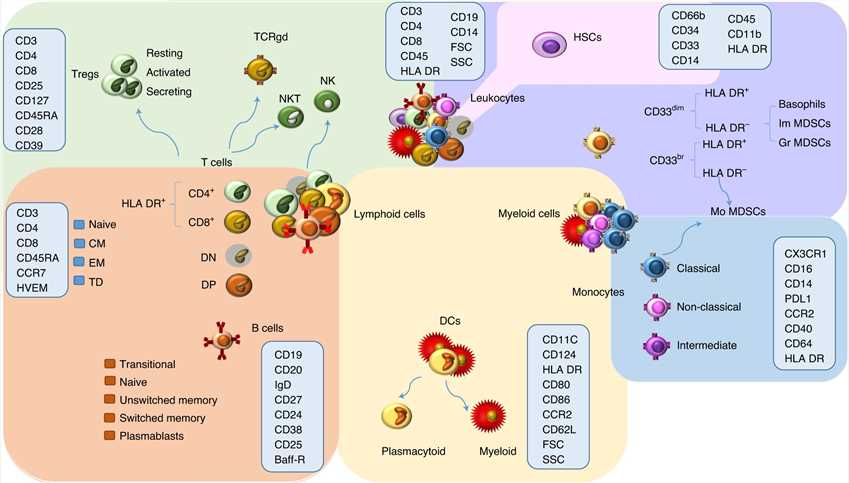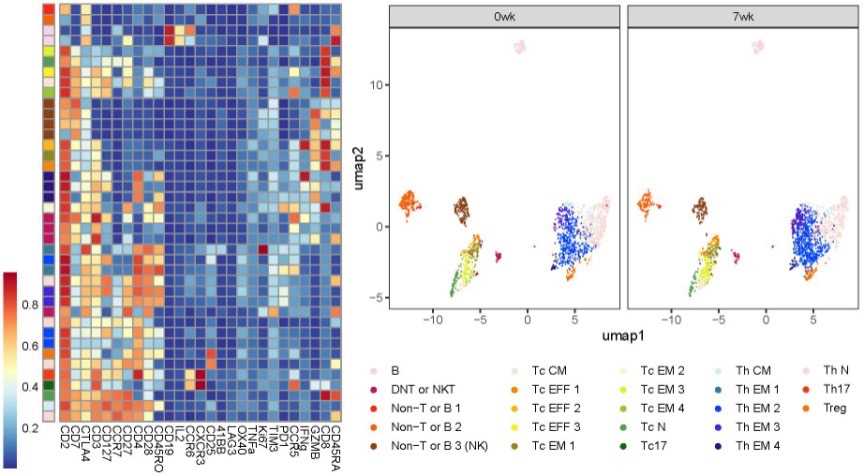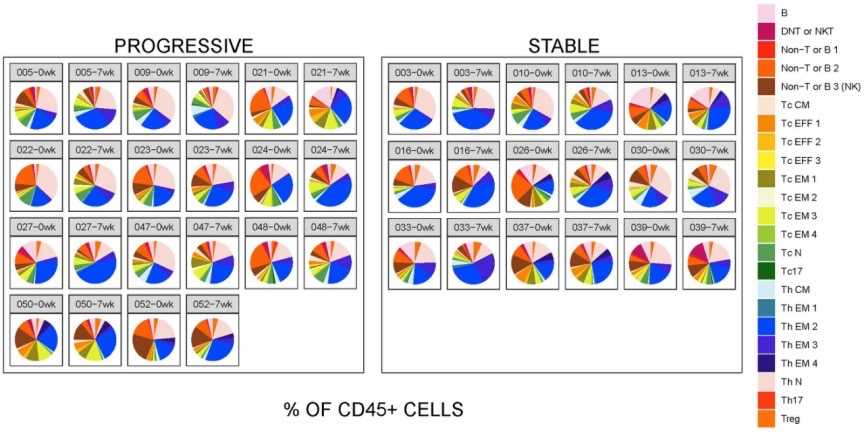|
Cell Type
|
Surface Marker
|
|
B cells
|
CD1c, CD10/Neprilysin, CD19, CD21, CD22, CD27, CD40, CD95, IgM, IgD, BCMA
|
|
Dendritic cells
|
CD11c, CLIP-170, Fascin, MADDAM, NLDC-145, MHCII (HLA-DR), CD33, CD123, CD16, CD128b
|
|
Granulocytes
|
-
Neutrophils: CD16, CD11b, CD16b, CD66c, CD66b, Ly-6G/Gr-1
-
Basophils: CD49b, CD41, Fc epsilon RI, CD203c, CD123, CCR3/CD193
-
Eosinophils: CD11b, CCR3/CD193, F4/80, Siglec-F, EMR1, Siglec-8
-
Neutrophil: CD11b, CD88, CD18, L-selectin (CD62L), CD32, CD54, CD66b
-
Basophil: CD41, CD200R, CD63, CD203c, CD69, CD13, CD164, CD107a, CRTH2/DP2
-
Eosinophils: CD69, CD63, CD44
|
|
Helper T Cells
|
BTLA, CD3, CD4, CD8, CXCL13, IFN-gamma, IL-4, IL-2, IL-5, IL-9, CCL17, CCL22, IL-21, IL-22
|
|
Innate Lymphoid Cells
|
CD3, CD4, CD45, CD49a, CD69, IFN-gamma, TNF-alpha, ICOS, IL-4, IL-5, IL-9, GM-CSF, NKG2A
|
|
Macrophages
|
CD68, CD64, CSF-1R, F4-80 (mice), CD11b
|
|
Monocytes
|
CD14, CD16, CD115, Ly-6C
|
|
Myeloid-derived Suppressor Cells
|
CD11b/Integrin alpha M, CD14, CD15, CD11c
|
|
Regulatory T Cell
|
CD3, CD4, CD5, CD14, CD19, Galectin-1, IL-10, IL-35, GITR, TGF-beta
|


 Fig.1 Some immune cells and their surface markers.¹
Fig.1 Some immune cells and their surface markers.¹
 Fig.2 Cell marker expression and cell subtype.²
Fig.2 Cell marker expression and cell subtype.²
 Fig.3 Proportion of advanced and stable cell subtypes.²
Fig.3 Proportion of advanced and stable cell subtypes.²

 Download our brochure
Download our brochure

